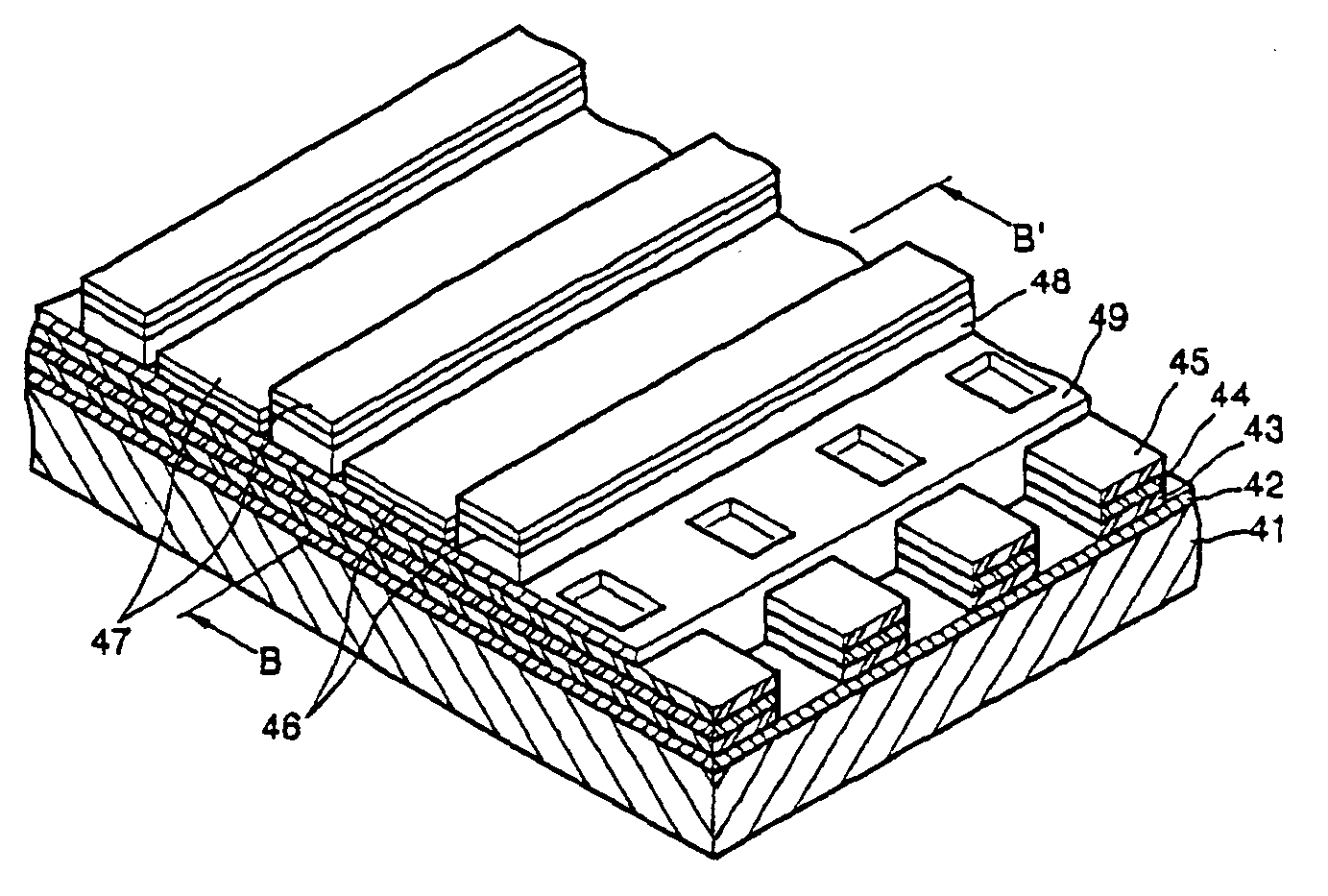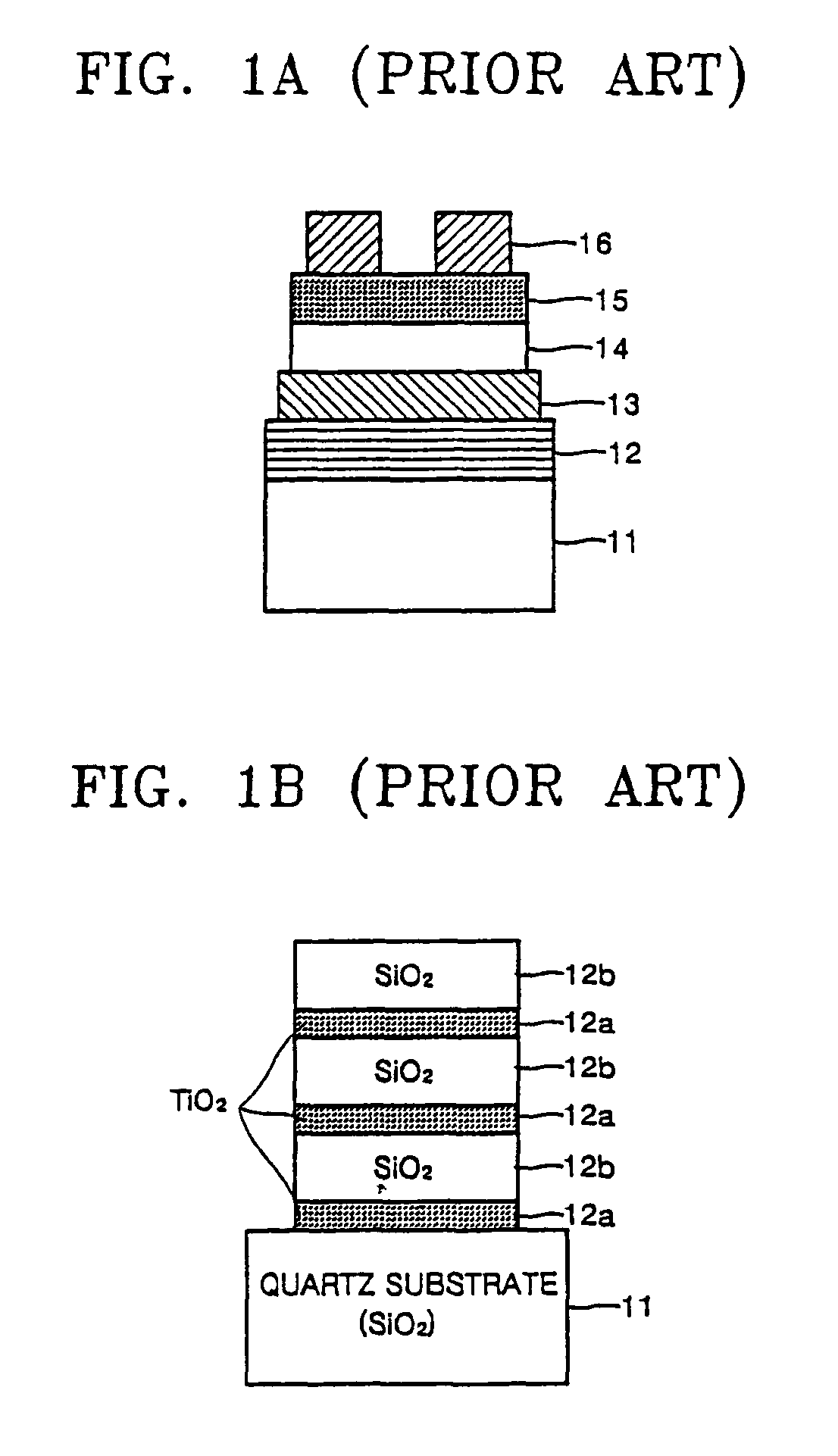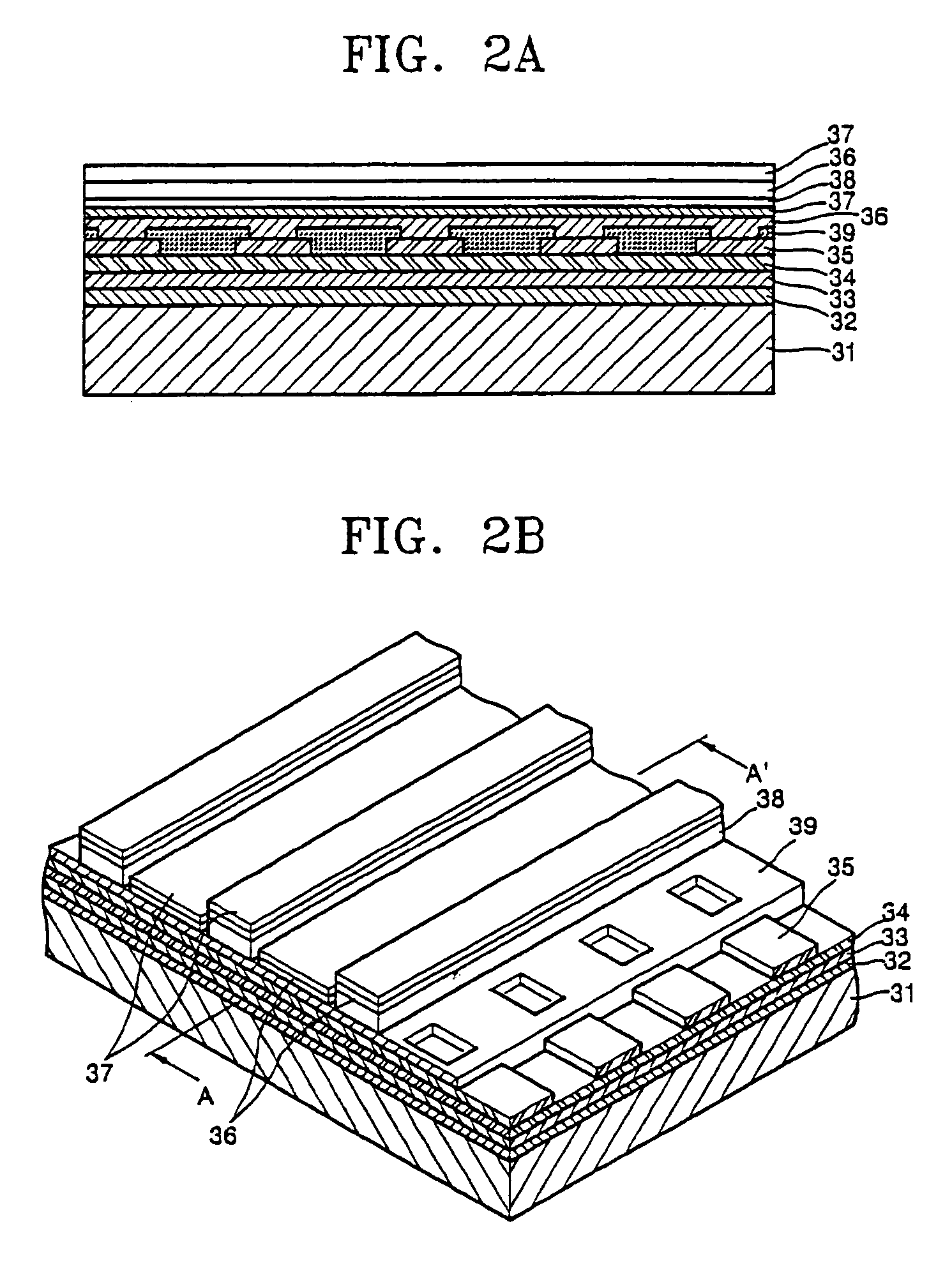Organic electroluminescent device using optical resonance effect
an electroluminescent device and optical resonance technology, applied in the direction of instruments, discharge tubes, luminescent screens, etc., can solve the problems of low luminance efficiency, disadvantages of conventional organic el devices, low luminance efficiency, etc., and achieve the effect of improving color purity and enhancing luminescen
- Summary
- Abstract
- Description
- Claims
- Application Information
AI Technical Summary
Benefits of technology
Problems solved by technology
Method used
Image
Examples
first embodiment
[0033]A perspective view of an organic EL device according to the present invention, which is a passive matrix, forward-emission display type, is shown in FIG. 2B. FIG. 2A is a sectional view of the organic EL device of FIG. 2B, taken along line A–A′.
[0034]Referring to FIGS. 2A and 2B, an organic EL device according to the first embodiment of the present invention includes a transparent glass substrate 31; a metal oxide layer 32, a thin metal layer 33, and a transparent spacer layer 34, which are sequentially deposited on the glass substrate 31; an indium tin oxide (ITO) anode layer 35 formed on the transparent spacer layer 34 as stripes; an inter-insulating layer 39 deposited on the transparent spacer layer 34 and the ITO anode layer 35 and patterned to expose a light emitting region of the ITO anode layer 35, as shown in FIG. 2B; an organic layer 36 on the inter-insulating layer 39; and a cathode layer 37 deposited on the organic layer 36 as a metallic total reflection layer. The ...
second embodiment
[0053]FIG. 3B is a perspective view of an organic EL device according to the present invention, and FIG. 3A is a sectional view of the organic EL device of FIG. 3B, taken along line B–B′.
[0054]Referring to FIGS. 3A and 3B, an organic EL device according to the second embodiment of the present invention includes: a transparent glass substrate 41; a metal oxide layer 42 deposited on the glass substrate 41; a thin metal layer 43, a transparent spacer layer 44, and an ITO anode layer 45, which are sequentially deposited on the metal anode layer 42 and patterned as stripes; an inter-insulating layer 49 deposited on the ITO anode layer 45 and the metal oxide layer 42 between the stripes of the ITO anode layer 45, the transparent spacer layer 44, and the thin metal layer 43 and patterned to expose a light-emitting region of the ITO anode layer 45; an organic layer 46 including an HIL contacting the exposed region of the ITO anode layer 45, a HTL, an EML, an ETL, and an EIL, which are seque...
third embodiment
[0060]In the organic EL device according to the present invention, the first ITO anode layer 55a instead of the transparent spacer layer 44(34) is formed underneath the thin metal layer 53, and the cathode layer 57, and the thickness of the first ITO anode layer 55a is controlled to manufacture a microcavity structure satisfying the requirements. When using an ITO anode, light transmittance slightly drops, compared with when using the transparent spacer layer 44(34), but may be considerably increased by appropriately controlling the thickness of the first ITO anode layer 55a.
[0061]The rectifying characteristics of the organic EL device, according to the third embodiment of the present invention, may degrade with an etching profile. To overcome this drawback, the first anode layer 55a underneath the thin metal layer 63 is removed in an organic EL device according to a fourth embodiment of the present invention.
[0062]FIG. 5 is a sectional view of an organic EL device according to the...
PUM
 Login to View More
Login to View More Abstract
Description
Claims
Application Information
 Login to View More
Login to View More - R&D
- Intellectual Property
- Life Sciences
- Materials
- Tech Scout
- Unparalleled Data Quality
- Higher Quality Content
- 60% Fewer Hallucinations
Browse by: Latest US Patents, China's latest patents, Technical Efficacy Thesaurus, Application Domain, Technology Topic, Popular Technical Reports.
© 2025 PatSnap. All rights reserved.Legal|Privacy policy|Modern Slavery Act Transparency Statement|Sitemap|About US| Contact US: help@patsnap.com



